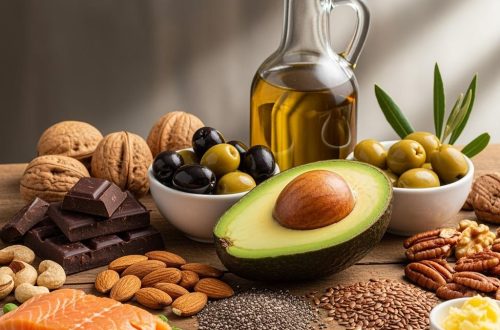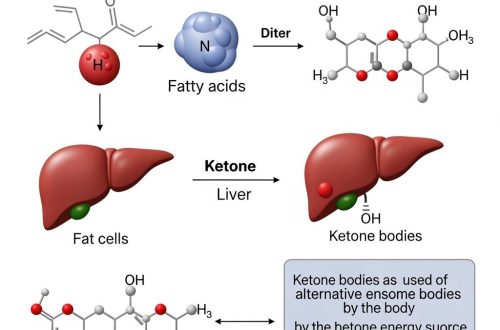A Comprehensive Guide
The transition to a ketogenic diet can transform your metabolism, but the initial adaptation phase often comes with challenges—chief among them being electrolyte imbalances. These crucial minerals play vital roles in hydration, muscle function, and neurological processes, and their management can make the difference between a miserable keto experience and a smooth transition. Let’s explore how to effectively navigate electrolyte management during those critical first weeks of keto adaptation.
Understanding the Keto Electrolyte Shift
When you drastically reduce carbohydrates, your body undergoes significant changes in how it processes and retains electrolytes. The reduction in insulin levels triggers increased sodium excretion by the kidneys. As sodium leaves your system, it takes potassium and magnesium along with it, creating a cascade effect that can lead to the infamous “keto flu” symptoms.
This physiological response isn’t a flaw—it’s a natural adaptation mechanism. Historically, our bodies evolved to conserve sodium during periods of carbohydrate scarcity. However, in our modern context of deliberate carbohydrate restriction, we need to consciously compensate for these electrolyte losses.
Key Electrolytes to Monitor
Sodium
Sodium is the primary electrolyte affected during keto adaptation. Without adequate carbohydrate intake, insulin levels drop, signaling your kidneys to excrete more sodium. This explains why many new keto dieters experience increased urination, leading to significant sodium losses.
Symptoms of sodium deficiency include headaches, fatigue, dizziness, and even palpitations. These symptoms are often misattributed to “carb withdrawal” when they’re actually indicators of electrolyte imbalance.
Potassium
As sodium levels fall, potassium balance is disrupted as well. Potassium regulates muscle contractions, heart function, and nerve signals. Inadequate levels can cause muscle cramps, weakness, and irregular heartbeats.
Magnesium
This often-overlooked mineral supports over 300 enzymatic reactions in the body. During keto adaptation, magnesium deficiency can manifest as muscle cramps, insomnia, irritability, and even constipation—complaints commonly reported by keto beginners.
Effective Strategies for Electrolyte Management
1. Prioritize Sodium Replenishment
Contrary to conventional dietary wisdom that emphasizes sodium restriction, keto dieters typically need to increase sodium intake, particularly during adaptation. The recommended additional intake is 3-5 grams of sodium daily (equivalent to 7-12 grams of salt).
Practical approaches include:
- Adding sea salt or Himalayan salt to water (⅓-½ teaspoon provides about 1-1.5g sodium)
- Consuming bone broth (1-2 cups daily)
- Using salt liberally on foods
- Incorporating sodium-rich foods like olives, pickles, and cured meats (in moderation)
2. Balance Potassium Carefully
Potassium supplementation requires a more measured approach, as excessive intake can be dangerous. The ideal strategy is to obtain potassium primarily through whole foods while using supplementation judiciously if needed.
Potassium-rich, keto-friendly foods include:
- Avocados (1,000mg per medium fruit)
- Leafy greens like spinach (840mg per cup)
- Salmon and other fatty fish (approximately 400-500mg per fillet)
- Nuts, particularly almonds and pistachios
- Using “lite salt” or potassium chloride salt substitutes in moderation
3. Optimize Magnesium Intake
Magnesium deficiency is common even before starting keto, making intentional intake especially important. Target 300-400mg of supplemental magnesium daily, preferably in chelated forms like magnesium glycinate, citrate, or taurate, which offer superior bioavailability compared to oxide forms.
Magnesium-rich foods to include:
- Pumpkin seeds (150mg per ounce)
- Spinach (157mg per cup)
- Dark chocolate (70%+ cacao, approximately 65mg per ounce)
- Mackerel and other fatty fish
4. Stay Hydrated—But Not Excessively
Water intake is crucial during keto adaptation, but excessive consumption without corresponding electrolyte replacement can worsen imbalances through dilution. Aim for 2.5-3.5 liters daily, adjusting based on activity level and climate.
A practical approach is to drink to thirst, ensuring your urine remains pale yellow. If you’re urinating frequently and your urine is completely clear, you may need to moderate water consumption or increase electrolyte intake.
5. Create an Effective Electrolyte Drink
Many commercial electrolyte supplements contain added sugars or insufficient mineral content. Instead, consider making your own balanced electrolyte drink:
- 1 liter of water
- ½ teaspoon sea salt
- ¼ teaspoon potassium chloride (“lite salt”)
- 1 tablespoon magnesium citrate solution or powder (approximately 100-200mg magnesium)
- Optional: natural flavoring like lemon juice or stevia
Sip this throughout the day, particularly during the first 2-3 weeks of adaptation.
Timing Your Electrolyte Strategy
The most critical period for electrolyte management is the first 7-14 days of keto adaptation. During this window, your body is adjusting to new metabolic pathways and experiencing the most significant electrolyte fluctuations.
Be especially vigilant about replenishment:
- First thing in the morning (after overnight fluid losses)
- Before, during, and after exercise (when electrolyte demands increase)
- During periods of increased sweating or hot weather
- Any time you experience symptoms like headaches, fatigue, or muscle cramps
When to Seek Medical Guidance
While electrolyte imbalances during keto adaptation are typically manageable through dietary adjustments, certain situations warrant professional medical consultation:
- If you take medications for heart conditions, hypertension, or kidney disease
- If you experience severe muscle weakness, significant heart palpitations, or extreme fatigue
- If symptoms persist despite appropriate supplementation
- If you have a history of electrolyte disorders or kidney issues
The Long-Term Perspective
After the initial adaptation phase (typically 3-4 weeks), many people find their electrolyte needs stabilize as the body becomes more efficient at conserving these minerals. However, ongoing attention to electrolyte balance remains important, particularly for active individuals or those living in hot climates.
By proactively managing electrolytes during keto adaptation, you can significantly reduce or even eliminate the uncomfortable transition symptoms many associate with low-carb diets. This foundational approach transforms the adaptation experience from an ordeal to be endured into a relatively smooth metabolic transition, allowing you to more quickly access the cognitive clarity, energy stability, and other benefits that make the ketogenic diet so appealing to many health-conscious individuals






One comment on “Electrolyte Imbalance During Keto”
Comments are closed.